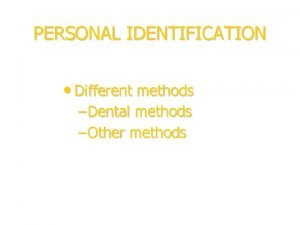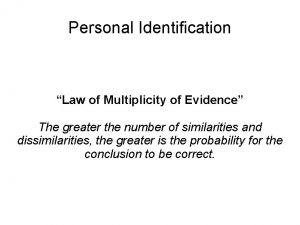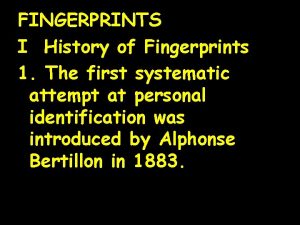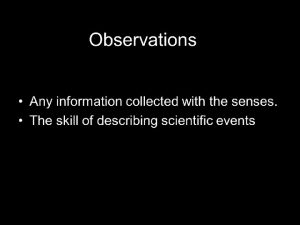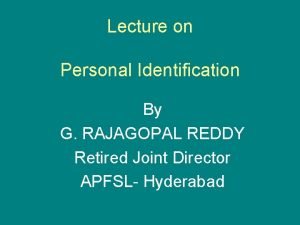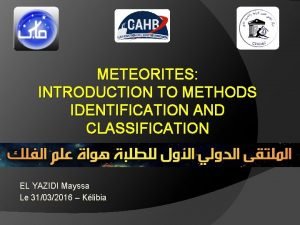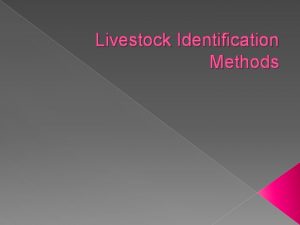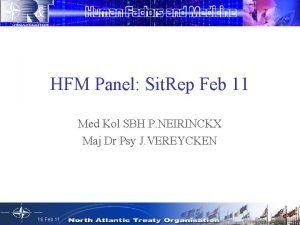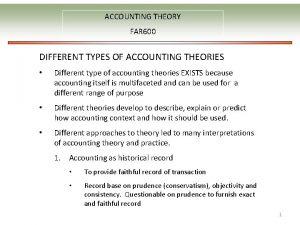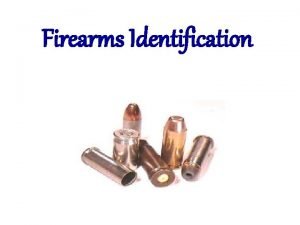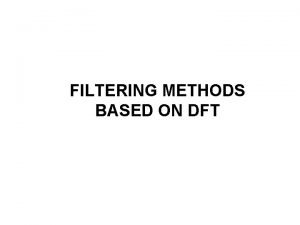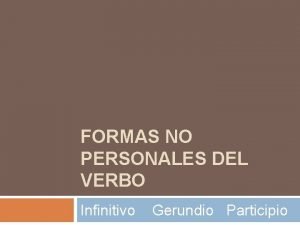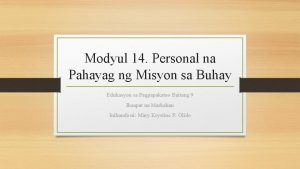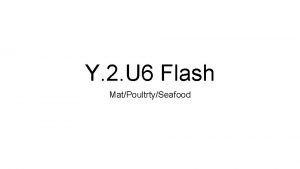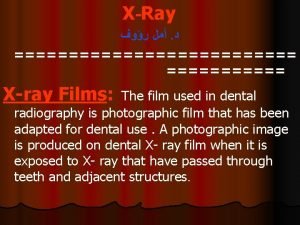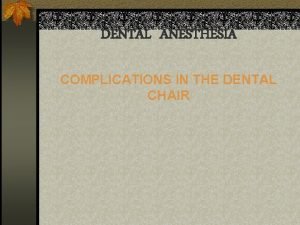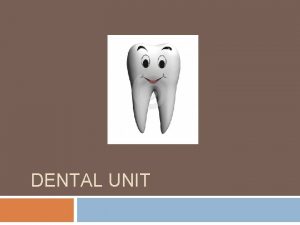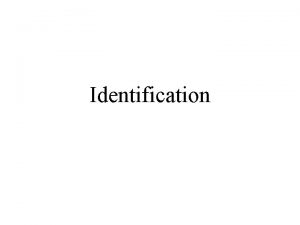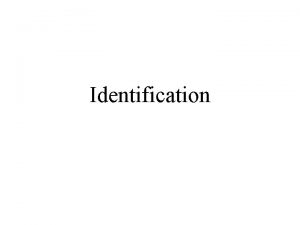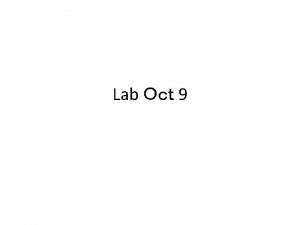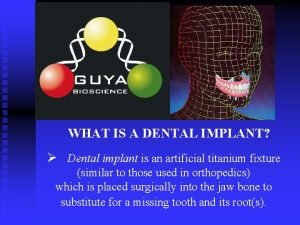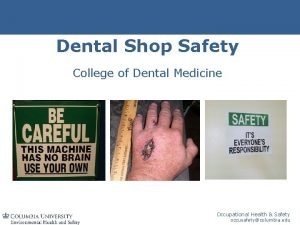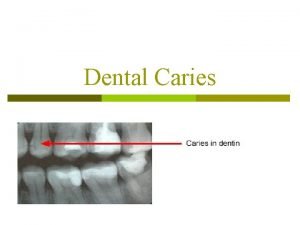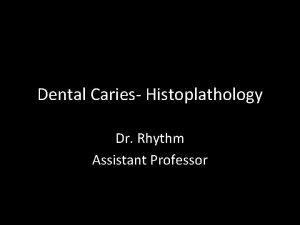PERSONAL IDENTIFICATION Different methods Dental methods Other methods











































- Slides: 43

PERSONAL IDENTIFICATION • Different methods – Dental methods – Other methods Håkan Mörnstad IOFOS, 2010

WHY IDENTIFICATION ? • Humanitarian reasons • Legal reasons • Death certificate • Cause of death • Permit to burial

PERSONAL IDENTIFICATION • Personal identification in general • Comparative identification – – Police methods Medical methods Dental methods DNA Part of a team • Reconstructive identification – Anthropology – Age estimation by teeth – DNA • Associative identification • Identification at mass disasters

POLICE METHODS • • • Visual recognition Handwriting Voice recognition Anthropology Body characteristics Removable “characteristics”

Visual identification Can be described as pattern recognition

Visual identification Can be described as pattern recognition

Visual identification Can be described as pattern recognition

Facial recognition

Facial recognition

Handwriting Visual identification Can be described as pattern recognition

Handwriting Visual identification Can be described as pattern recognition

Voice recognition Forensic phonetics “The ear recognizes a speakers voice as well as the eye recognizes a face” Quintillianus, roman philosopher, 30 -96

The simple method ” Kreatursupköparen NN har i Sthlm af 3: ne landtbor köpt sju oxkreatur för 1, 050 kr. o. derför endast betalt handpenning 20 kr. , hvarefter han sålt kreaturen till underpris o. afvikit. Om NN anträffas, bör han g r i p a s, om han ej kan aflemna köpesumman, qvarhållas samt underrättelse skyndsamt meddelas Stadsf. Cederborg, då vidare besked straxt erhålles. NN är omkr. 25 à 27 år, 5, 6 fot lång, tjock öfver axlarne, med rödlätt, trindt ansigte, mörkt hår o. ljusbrunt hakskägg samt iklädd blå kavaj o. mörk tygmössa”. (Polisunderrättelser 1878). NN is about 25 – 27 years of age, 5. 6 feet tall, broad over the shoulders, with a reddish, round face, dark hair and light brown beard, and dressed in a blue jacket and a dark cap of cloth.

Biometrics/anthrometry A scientific system for personal identification was first introduced in France in 1883. Alphonse Bertillon’s anthropometric system for personal identification was based on the hypothesis that the human skeleton is stable from the age of 21 years. Eleven different measurements – among them height, embracing width and the ear – was completed by a ”portrait parlé ”, i. e. a verbal description of the face. Alphonse Bertillon 1853 - 1914

The eleven measurements: • Height • Stretch: Length of body from left shoulder to right • • • middle finger when arm is raised Bust: Length of torso from head to seat, taken when seated Length of head: Crown to forehead Width of head: Temple to temple Length of right ear Length of left foot Length of left middle finger Length of left cubit: Elbow to tip of middle finger Width of cheeks Length of left little finger


Used to select a small number of candidates Bertillon also envisioned the system as being organized in such a way that even if the number of measurements was limited the system could drastically reduce the number of potential matches, through an easy system of body parts and characteristics being labeled as "small", "medium", or "large". For example, if the length of the arm was measured and judged to be within the "medium" range, and the size of the foot was known, this would drastically reduce the number of potential records to compare against. With more measurements of hopefully independent variables, a more precise identification could be achieved, which could then be matched against photographic evidence.


Anthrometry ” A round chin, an oval face, gray eyeshave never led to the recognition of any criminal save in the domain of romance. ” To be exact, was M. Bertillon's first care.

Police identification • Facial recognition – Identification cards, etc • Other body characteristics (tattoos) • Clothing (make, size, colour, pattern, etc) • Rings (with inscriptions) • Jewelleries (description, material) • Watches (make, description)

Police identification • Tattoos

Police identification

Police / associative identification • Facial recognition – Identification cards, etc • Other body characteristics (tattoos) • Clothing (make, size, colour, pattern, etc) • Rings (with inscriptions) • Jewelleries (description, material) • Watches (make, description)

Police identification For a safe identification, characteristics fixed to the body is needed. Something that can not be changed or forged.

Dactyloscopy Used in China already during the 3 rd century BC on official documents, land sales, contracts, loans etc. A noted English scientist Francis Galton realised that the papillary pattern of the fingers could be used in personal identification (1892) The dactyloscopy was further developed and simplified by the Englishman Edward Henry (Classification and Uses of Fingerprints, 1900).

Dactyloscopy, timeline • • 1897 World’s first fingerprint bureau opens in Calcutta 1901 Scotland yard 1902 New York Civil Service In Scandinavia finger printing was first introduced in Denmark in 1904. An office for personal identification was set up in Stockholm 1906. In 1912 the first criminal sentence was given with fingerprint as evidence. The method was fully introduced by an ordinance in 1920. Since 1969 the police fingerprint department is computerised (AFIS).

Patent/Latent Fingerprint No two fingerprints have ever been found identical

Dactyloscopy Classification patterns Arch Loop Whorl

Dactyloscopy IDENTIFICATION CHARACTERISTICS RIDGE ENDING BIFURCATION DOT (or ISLAND)

Dactyloscopy

Biometry Biometrics are automated methods of recognizing a person based on a physiological or behavioural characteristic. • Face • Fingerprint / Palm Print • Retinal • Iris • Hand Finger Geometry • Vein • Handwriting • Voice/Speaker • Multimodal

Biometry

Tattoo

Radio frequency identification (RFID) RFID is a method of remotely storing and retrieving data using devices called RFID tags/transponders. An RFID tag is a small object, such as an adhesive sticker, that can be attached to or incorporated into a product. RFID tags contain antennas to enable them to receive and respond to radio-frequency queries from an RFID transceiver.

RFID




Rfid How would you like it if, for instance, one day you realized your underwear was reporting on your whereabouts

THE ULTIMATE IDENTIFICATION CARD

Forensic medicine in identification • Extrinsic characteristics – – Surgical scars Tattoos Skin changes Anomalies – – – Presence or absence of inner organs Postoperative characteristics Implants • Internal characteristics • Radiographic identification – Nasal sinuses – Other contrasting structures

The frontal sinus for identification

Forensic serology and genetics in personal identification • Serologic examinations • DNA-examinations – sex – diseases – relationships – comparison with own material
 Different methods of personal identification
Different methods of personal identification Positive identification
Positive identification Explain the law of multiplicity of evidence
Explain the law of multiplicity of evidence Taiwan logistics industry
Taiwan logistics industry Two focal points of fingerprint
Two focal points of fingerprint Valentin ross forensic science
Valentin ross forensic science Personal identification
Personal identification Metal identification methods
Metal identification methods Livestock identification methods
Livestock identification methods Med kol
Med kol Types of repair
Types of repair Why do different polymers have different properties?
Why do different polymers have different properties? Technicolor test
Technicolor test Sound will travel at different speeds in different mediums.
Sound will travel at different speeds in different mediums. Examples of a medium in waves
Examples of a medium in waves Different culture have different moral codes
Different culture have different moral codes Different angle different story
Different angle different story Acid base song
Acid base song Different materials have different
Different materials have different Things that make us different
Things that make us different Venn diagram different same different
Venn diagram different same different Sahli's pipette
Sahli's pipette 4-1 practice congruent figures answers
4-1 practice congruent figures answers Is personal statement same as cover letter
Is personal statement same as cover letter Principle of glucose test
Principle of glucose test What is separation
What is separation Different types of accounting methods
Different types of accounting methods Schleiermacher on the different methods of translating
Schleiermacher on the different methods of translating Types of errors in numerical computation
Types of errors in numerical computation Example of crude drug adulterated with exhausted drug
Example of crude drug adulterated with exhausted drug Different methods of separating mixtures
Different methods of separating mixtures Different approaches and methods
Different approaches and methods Ways of acquiring knowledge
Ways of acquiring knowledge Draw the different rifling methods
Draw the different rifling methods Recall the different methods of factoring polynomials
Recall the different methods of factoring polynomials Fish preservation principles
Fish preservation principles Ways of presenting information
Ways of presenting information Dft perform filtering operation in
Dft perform filtering operation in Oraciones no personales
Oraciones no personales Adivinanza de aseo personal
Adivinanza de aseo personal Ano ang kahulugan ng personal na pahayag ng misyon sa buhay
Ano ang kahulugan ng personal na pahayag ng misyon sa buhay Metal coping fpd
Metal coping fpd Shellstock identification tags
Shellstock identification tags Dental xray films
Dental xray films
